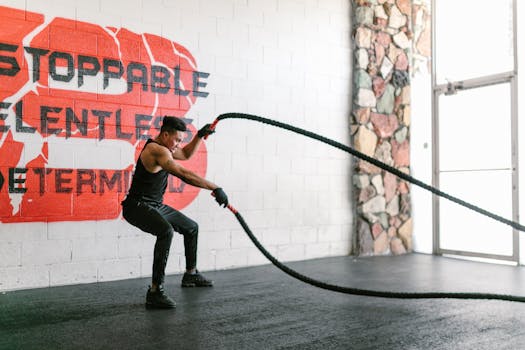
Introduction to HIIT

High-Intensity Interval Training (HIIT) is a popular exercise method that alternates between short bursts of intense activity and less intense recovery periods. This training style has garnered attention for its effectiveness in promoting fat loss, improving cardiovascular health, and enhancing overall fitness.
Benefits of HIIT for Fat Loss

HIIT is known for its time efficiency, allowing individuals to burn calories and fat in a shorter duration compared to traditional steady-state cardio exercises. Some key benefits include:
- Increased Metabolic Rate: HIIT workouts can elevate your metabolic rate for hours after exercise, leading to additional calorie burn.
- Fat Loss: Research indicates that HIIT is particularly effective in reducing body fat while preserving muscle mass.
- Improved Cardiovascular Health: HIIT can enhance heart health by improving oxygen consumption and increasing cardiovascular endurance.
How to Structure a HIIT Workout

A typical HIIT workout involves a warm-up followed by intervals of high-intensity exercise and recovery. Here’s a simple structure you can follow:
- Warm-Up: 5-10 minutes of light cardio (jogging, cycling, etc.)
- Work Interval: 20-30 seconds of maximum effort (sprinting, jumping, etc.)
- Recovery Interval: 1-2 minutes of low-intensity activity (walking, slow cycling)
- Repeat: Perform 5-10 cycles of work and recovery intervals.
- Cool Down: 5-10 minutes of stretching to aid recovery.
Types of HIIT Exercises

HIIT can be adapted to various forms of exercise, making it suitable for all fitness levels. Here are some popular HIIT exercises:
- Sprinting: Short bursts of sprinting followed by walking or jogging.
- Circuit Training: Combining different exercises like burpees, push-ups, and squats into a high-intensity circuit.
- Bodyweight Exercises: Using your body weight for high-intensity moves like jump squats, mountain climbers, and planks.
Tips for Maximizing HIIT Results

To get the most out of your HIIT workouts, consider the following tips:
- Stay Hydrated: Drink plenty of water before, during, and after your workout.
- Focus on Form: Prioritize proper form over speed to avoid injuries.
- Mix It Up: Vary your workouts to keep things interesting and challenge your body in different ways.
- Listen to Your Body: Take rest days when needed and modify exercises to match your fitness level.
Conclusion

High-intensity interval training is an effective method for fat loss and overall fitness improvement. By incorporating HIIT into your workout routine, you can achieve significant results in a shorter amount of time. Start with a few sessions a week and gradually increase intensity and frequency as your fitness improves.






